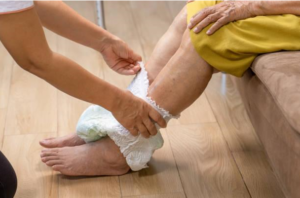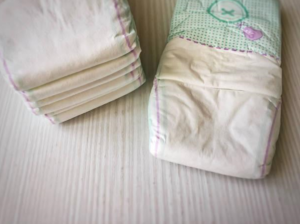Stay Dry And Comfortable: The Latest Innovations In Bed Pads For Incontinence In 2024

One of the sensitive issues faced by many people worldwide is incontinence, which causes discomfort and reduces quality of life. This could be one sensitive area that needs to be addressed with compassion and empathy.
Dignity, comfort, and discretion are the top issues whenever incontinence occurs, so the demand for effective solutions is high. One such initiative is using bed pads designed to provide a sure and comfortable way for a person to prevent leakages during the night or even while sleeping.
As 2024 approaches, the industry has seen some amazing innovations in bed pad technology, which offer individuals or caregivers better options to manage incontinence confidently and easily.

1. Advancements in Absorbency and Leakage Protection
The greatest development in bed pad technology is the innovation of very absorbent materials that can hold in the leak and keep the surface dry. Through heavy investment in research and development, manufacturers have developed bed pads made with the best absorbent polymers, complete with an advanced layering system.
These new materials can quickly draw moisture away, keeping users dry and comfortable even at night or during extended periods of rest.
In addition to high absorbency, most of the latest varieties in incontinence pads for beds come with advanced leakage barriers and containment systems. Such protection helps to create a safety barrier whereby any leak gets stopped from getting past the edges onto the bed or furniture.
Moreover, this added protection minimizes mess and cleanup and gives peace of mind to both users and their caretakers.
2. Breathable and Skin-Friendly Materials
Conscious of the urgent need for great comfort in incontinence products, bed pad manufacturers have responded to the call. Their designs blend breathable materials that are friendly to the skin, ensuring both comfort and effectiveness.
The traditional bed pads had several issues, including heat build-up, moisture accumulation, and skin irritation. The latest technological innovations have concentrated on features that promote airflow and wick moisture away to breathe more effectively and keep users drier to ensure comfort.
Most contemporary bed pads have a soft, hypoallergenic feature that poses no skin irritation, rash, or discomfort. Moreover, some brands have gone further to develop products made of natural fibers and other eco-friendly materials, which partly account for those genuinely looking for ecologically friendly and sustainable solutions.

3. Discreet and Odor-Controlling Features
Odor-free bedding is an important factor for those with incontinence because of self-esteem and well-being. Manufacturers of bed pads will describe different odor-controlling technologies within some of their bed pad designs. Potent odor-neutralizing agents and antimicrobial treatments act on some odors, and features reduce unpleasant smells, thus allowing the user to have a fresher and more comfortable environment.
Moreover, most of the latest bed pads focus on discretion through their sleek, low-profile designs. They are slim and lightweight, making it easy for the user to conceal them under the bedding or even their clothes. This way, the user’s dignity and privacy are promoted without compromising protection and comfort.
4. Enhanced Mobility and Positioning
Conventional bed pads can be quite hard to handle, even for someone with limited movement or needing assistance changing positions. The latest technological innovation in bed pads has tackled this because it makes positioning and transferring easier.
Some bed pads come with grips or handles specialized for comfort in adjustments or repositioning without causing discomfort from moving. Other designs have the edges reinforced or feature a moisture-resistant backing, preventing the pad from bunching up or slipping with movement. This ensures consistent protection, whether day or night, enhancing the user’s confidence and comfort.

5. Integration with Smart Technology
In this age of digitization, bed pad manufacturers are investigating methods to integrate smart technology into their products. This integration aims to provide advanced monitoring data tracking and remote assistance to users and caregivers, enhancing incontinence management’s overall experience and effectiveness.
For instance, some bed pads nowadays come with inbuilt sensors that can sense moisture levels or get saturated and remind a caregiver or user to change the pad. Other technological solutions include mobile apps or connected devices that monitor usage patterns, send reminders to change the pad, or even automatically reorder supplies.
6. Eco-Friendly and Sustainable Options
Many manufacturers of bed pads have refocused their attention on developing environmentally friendly and sustainable product lines in light of growing concern for environmental impact and sustainability issues that use biodegradable materials, recycled components, and environmentally responsible manufacturing processes.
Plant-based or renewable material bed pads are ideally disposable today, an alternative to most conventional types made of plastics. Brands have also developed reusable bed pads, which can be washed and reused several times, adding up to savings and thus reducing waste.

Bottom-Line
The incontinence management world in bed pads is all set to go through a revolutionary change in 2024. Advanced technologies and materials have already transformed how users and caregivers deal with this sensitive issue toward enhanced comfort, discretion, and confidence levels.
All this, from advanced absorbency to leakage protection, is made of breathable, skin-friendly material. These features are all set to become standard in the new lot of bed pads, which place the well-being and dignity of users above all. It also adds extra features like odor control, enhanced support for mobility, and integration with smart technologies to give added convenience and peace of mind.
The surge further improves this in the availability of eco-friendly and sustainable options, which, in many respects, reflects the industry’s commitment to a better environment.
Moving forward to cope with the management problems of incontinence, these innovations in bed pad technologies show huge strides in providing comfort, discretion, and overall quality of life for people with this condition.




